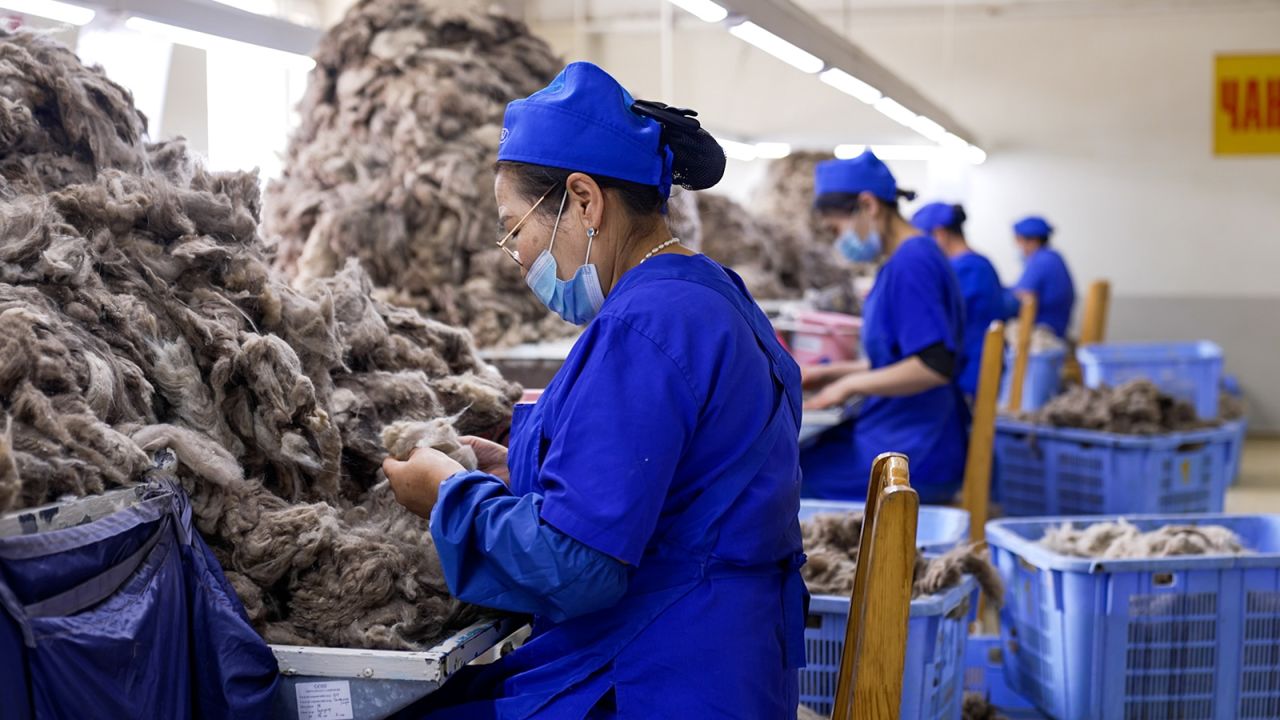Mongolia’s sprawling steppe, characterized by its vast grasslands, faces an impending threat due to the surging demand for cashmere. While this luxurious wool holds great allure in the global market, it’s imperative to examine the environmental repercussions and the potential for sustainable practices within the industry. Mongolia’s traditional nomadic herders, who have long relied on cashmere production, are now at a crossroads as they grapple with balancing economic gains and environmental preservation.
Challenges of Cashmere Harvesting
As winter snows melt across central Mongolia, fierce winds and sandstorms mark the onset of a challenging period for herders like Bayarduuren Zunduikhuu. For her, spring signals the commencement of the cashmere harvest, a vital source of income. The meticulous process involves hand-collecting fine underbelly fibers from free-roaming goats as they naturally molt in response to warming weather. These fibers are prized for their durability and softness, making cashmere a sought-after material for luxury clothing items like sweaters, scarves, and blankets.
Environmental Consequences of Cashmere Boom
Mongolia’s cashmere industry is pivotal on the global stage, accounting for approximately 40% of the world’s cashmere production, around 10,000 metric tons in 2021, according to the United Nations Development Programme (UNDP). However, this surge in demand has led to a dramatic increase in the number of grazing goats, which now outnumber the human population by more than eight to one. Coupled with the impacts of climate change and livestock grazing, around 70% of Mongolia’s pasturelands have suffered degradation. This poses a significant threat to both the local ecosystem and the industries reliant on it.
Towards Sustainable Practices
To combat the environmental toll of cashmere production, some luxury labels are embracing eco-friendly alternatives. Mongolian designer Oyuna Tserendorj, who operates her brand from London, underscores the importance of understanding the material’s origins and production methods. Her label, Oyuna, maintains a short supply chain, collaborating with Mongolian factories and nomadic cooperatives. This commitment to transparency and sustainability is reflected in the premium price of her products.
Oyuna’s partnership with the non-profit Sustainable Fiber Alliance (SFA) further promotes sustainable herding practices, contributing to both land management and animal welfare. By sourcing only from herders that meet SFA’s standards, Oyuna aims to create a positive impact while producing quality garments.
Empowering Herders and Protecting the Ecosystem
Encouraging profitability among herders could help alleviate environmental pressures by discouraging overgrazing. One suggestion involves processing and manufacturing more cashmere within Mongolia itself, enabling herders to contribute to the value chain beyond raw material export. By directly cleaning and sorting cashmere for local companies, herders can exercise quality control and command higher prices.
Exploring Sustainable Alternatives
Luxury brands are exploring various ethical alternatives to traditional cashmere. Stella McCartney, for instance, employs recycled cashmere to reduce waste, while Japanese startup Spiber develops a synthetic cashmere alternative from plant-based ingredients. Another option gaining traction is yak wool. Brands like Bodios and Hypechase are betting on yak wool’s potential as a sustainable source of income for herders. Yak wool, although coarser and less popular than cashmere, offers ecological benefits due to the yaks’ gentler grazing habits and high-altitude foraging.
Quality Over Quantity
Despite the growing array of alternatives, the demand for cashmere continues to escalate. Sustainable growth, as advocated by the UNDP, hinges on prioritizing quality over quantity. Elaine Conkievich, the UNDP’s resident representative in Mongolia, underscores the importance of maintaining sustainable practices and supporting local herders’ way of life. Consumer awareness and willingness to pay a premium for ethically produced garments are vital in steering the industry toward a more sustainable path.
Preserving Heritage and Nature
For herders like Bayarduuren Zunduikhuu, embracing sustainable practices offers a lifeline to maintaining their traditional way of life. The potential for a balanced and ecologically responsible cashmere industry provides hope that the steppe’s delicate ecosystem and the livelihoods of herders can be safeguarded. As Mongolia’s cashmere industry navigates the complexities of global demand and environmental concerns, the decisions made today will resonate through generations, ensuring a harmonious coexistence between nature and culture.
